A Timeline for the
Upper Blue Mountains
Upper Blue Mountains
compiled by Jim Smith, 2002
introduction
spring
summer
autumn
winter
Autumn
(March, April, May)
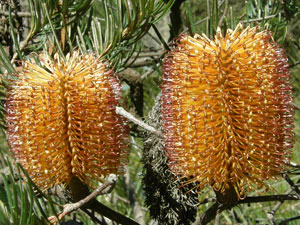 Hairpin Banksia (Banksia spinulosa)
Hairpin Banksia (Banksia spinulosa)
Weather:
March is one of the wetter months. Equinox is 22 March. There are still cloudless days in April.
Mammals:
Greater Gliders born in April.
Bush Rats, Rattus fuscipes, born (March-May), numbers peak in May, many juveniles present.
Reptiles and Frogs:
Whistling Tree Frogs begin to call (March to September).
Aquatic:
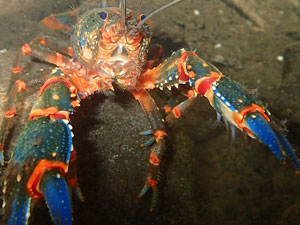 Crayfish (photo: Emanuel Conomos)
Crayfish (photo: Emanuel Conomos)
Eels migrate to sea.
Insects:
Blue Jewel Butterfly, Hypocrysops delica delica (March/April) - ants attend caterpillars on wattle.
Solender Brown Butterfly, Heteronympha solandri solandri (March/April)
Banks Brown Butterfly (Heteronympha banksii banksii) (March/April)
"Easter Moth" (Chalepteryx felderi) (family Anthelidae) - large brown moths bump on window panes at night.
"Ghost Moth" (Aenetus eximius) (May), Swift Moth family - pink and green.
Birds:
March: Highest bird species diversity.
Silvereye migration to north.
Tree Martins, Satin Flycatchers leave for Queensland, New Guinea.
Rose Robins, Thrushes, Brown Gerygones go to open forest areas (and lawns, ovals, etc).
Red-browed Finches flock.
Fledgling birds sometimes get cold and wet.
Gang Gangs feed on Scribbly Gum and Peppermint Gum seeds.
Currawongs flock.
April: Yellow-faced Honeyeater and White-naped Honeyeater migration to north.
Spotted Pardalote migration through mountains to north.
First Lyrebirds call.
Crimson Rosellas often come down with virus, get sick, stagger, bump into trees, etc.
May: Honeyeater migration continues.
Currawongs and Bowerbirds flock to towns (fruit eaters).
Tasmanian Silvereyes pass through mountains on migration to north.
Plants:
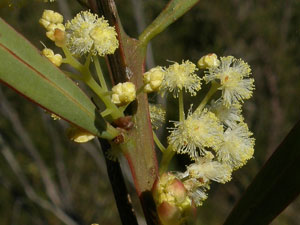 Sweet-scented Wattle (Acacia suaveolens)
Sweet-scented Wattle (Acacia suaveolens)
March: Parson's Bands Orchids (Eriochilus cucullatus) in flower, native bee pollinates it.
Banksia spinulosa flowers.
Acacia suaveolens flowers.
Fungi abundant after rain.
© 2026 Blue Mountains Conservation Society Inc.
If you'd like to give feedback about this page please contact: webmaster@bluemountains.org.au
We acknowledge the traditional custodians of this land
the Darug and Gundungurra people
and pay respect to their Elders past and present.
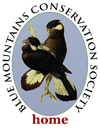
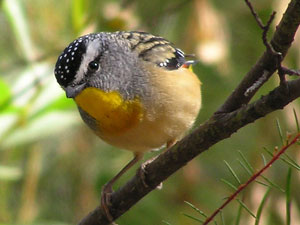 Spotted Pardalote
Spotted Pardalote